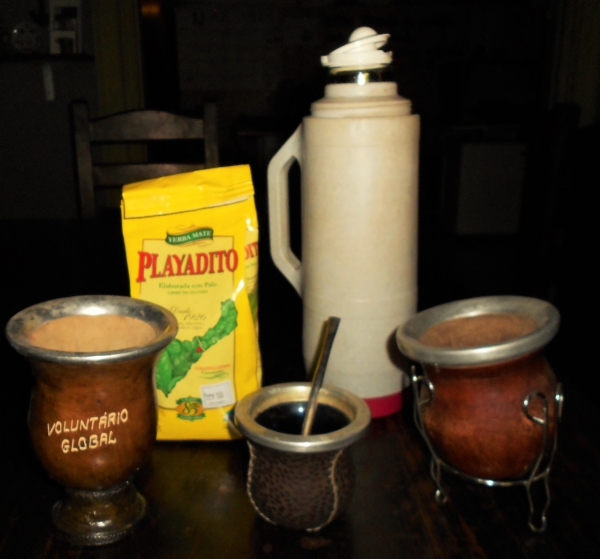Yerba mate or more commonly used mate is native to South America and more importantly is home to Argentina. Dating back pre-colonial era, the indigenous people found trees along the rivers of Paraguay, Uruguay and Parana that were used for medical practices and later consumed as a drink. Dry leaves from these trees were believed to improve one’s health and as a ritual, drinking mate became a way of life.
Mate and Buenos Aires are in a long-term relationship that seems to keep growing. Its influence on the urban culture in Buenos Aires has transformed into a commercial enterprise. In most cafés and supermarkets you can take your pick from an assortment of brands, flavors, origin (what region it’s from) and prices. Fun fact, most Argentineans will consume up to 5kg (about 11lbs.) of mate a year!
For us gringos, the most important piece of advice I can share is to drink the entire cup of mate from the gourd. Historically this is the proper what to drink mate and any porteno will tell you the same. Typical items necessary for a complete mate experience include a gourd (traditional cup), bombilla (straw), and mate of course. Often you’ll find people all over Buenos Aires holding a gourd and bombilla but also a thermos of metal or plastic. Like serious coffee drinkers, for the mate purest a thermos gives you the opportunity to fully enjoy a daily helping of caffeine and savor the taste for a longer period of time. Yes, mate contains caffeine like most European style black teas. And similar to some coffees, mate is bitter but with qualities of green tea. Remember your manners, if you are offered mate, don’t make a weird face. Take it, drink it and pass it. Or use your words and simply say ‘no, thank you.’ The taste of mate is a bit strong and may not be for you. Not everyone from South America is a fan despite the case in Buenos Aires.
Furthermore there is a process to drink mate as I soon learned. First is wash out the mate gourd thoroughly so that there’s no residue from previous use. Next you heat water to the point before it boils, unless you prefer to use orange juice which is another method; this is typical in verano (summer) in Buenos Aires and in Paraguay. Then you fill the gourd with the mate leaves and once the water is hot, you pour into the mate gourd and viola! However, a word of caution. Depending on the type of bombilla (straw) you have if you are using hot water be VERY careful drinking to avoid burning your tongue or lips. Otherwise it’s not as fun as I found out…
If you are interested in buying your own ‘mate kit’ I suggest you start by taking a trip to your local grocery store. Get a sense of the styles, prices and other mate paraphenilla. Instead of buying something the first time, give yourself a day or so especially if you have enough time to go to a street market. On the weekends, there are many street markets in places like San Telmo, Villa Crespo and Recoleta with plenty of gourds and bombillas to choose from AND at reasonably barato (cheap) prices. While you are in Buenos Aires, no matter how long your stay you will try mate. Mate is a way for people to be social and plays a key role in bringing people together. The mate experience is one meant to be shared, so go out there make some new friends!





